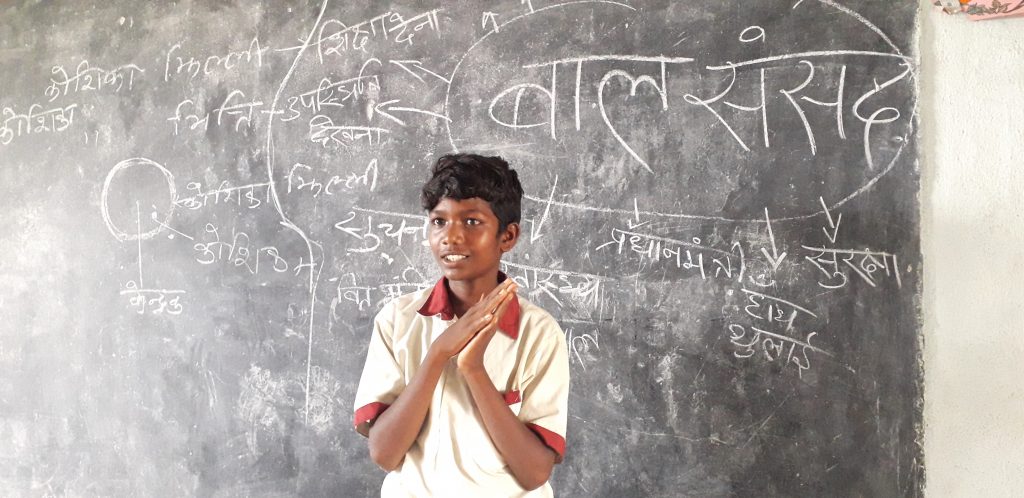
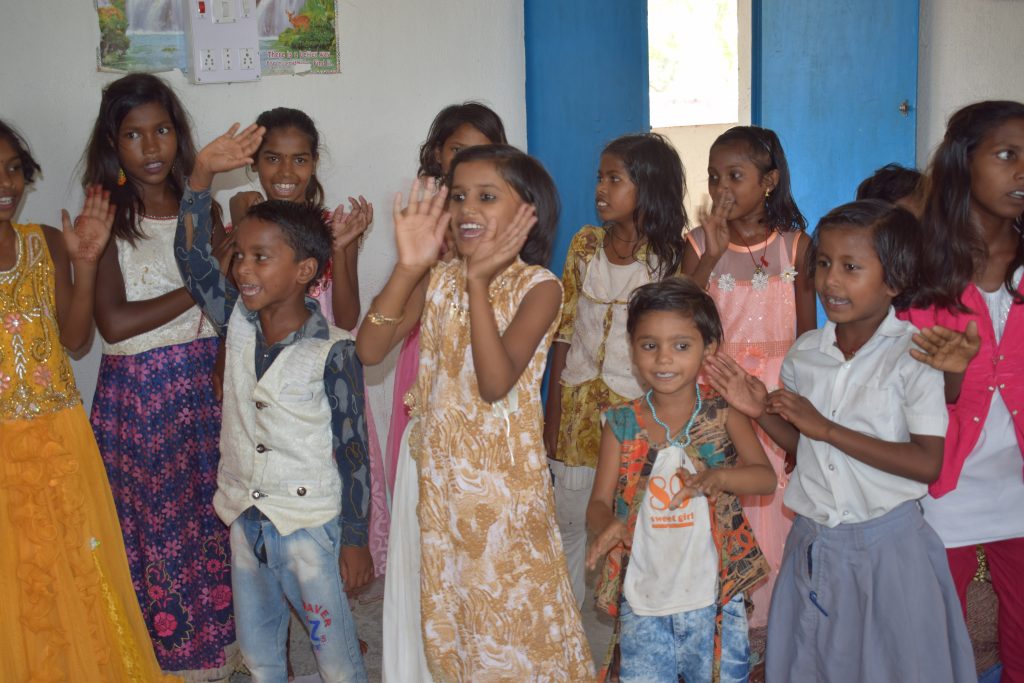
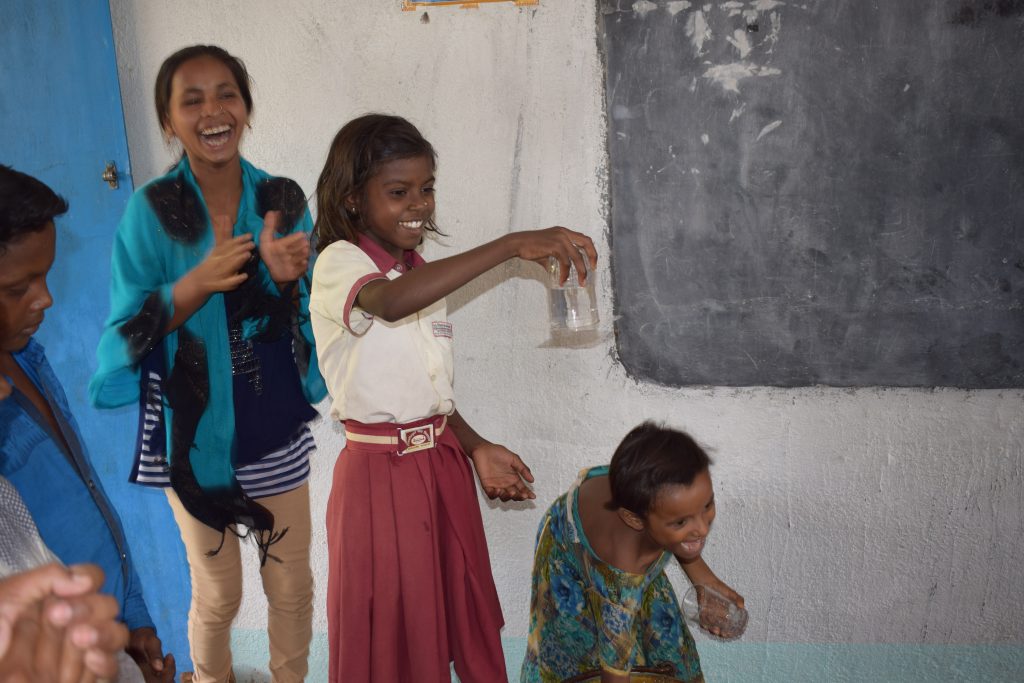
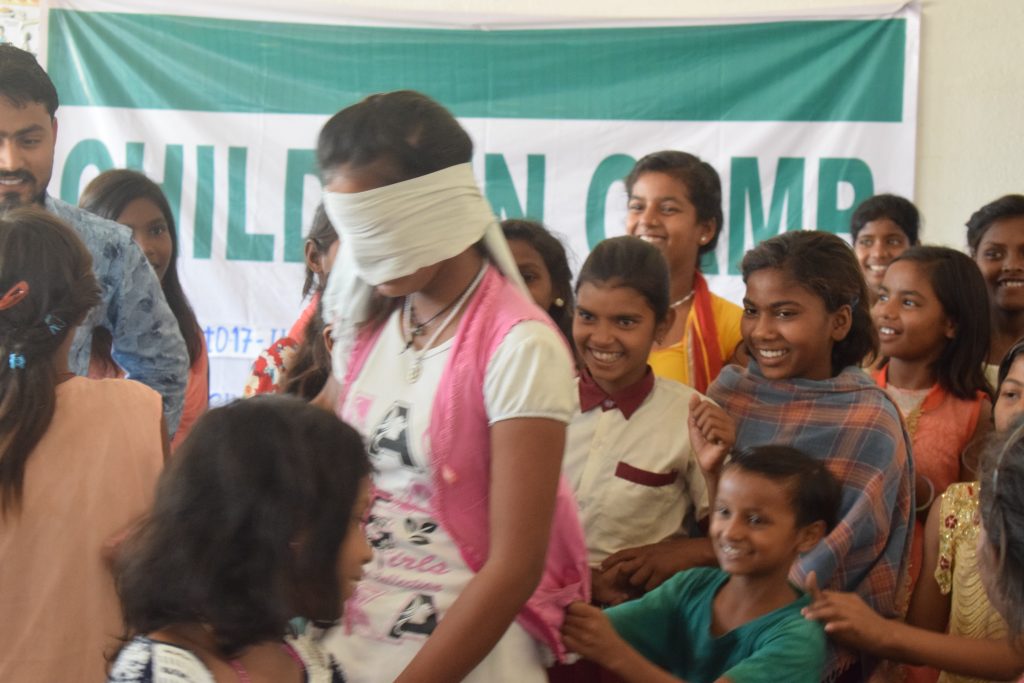
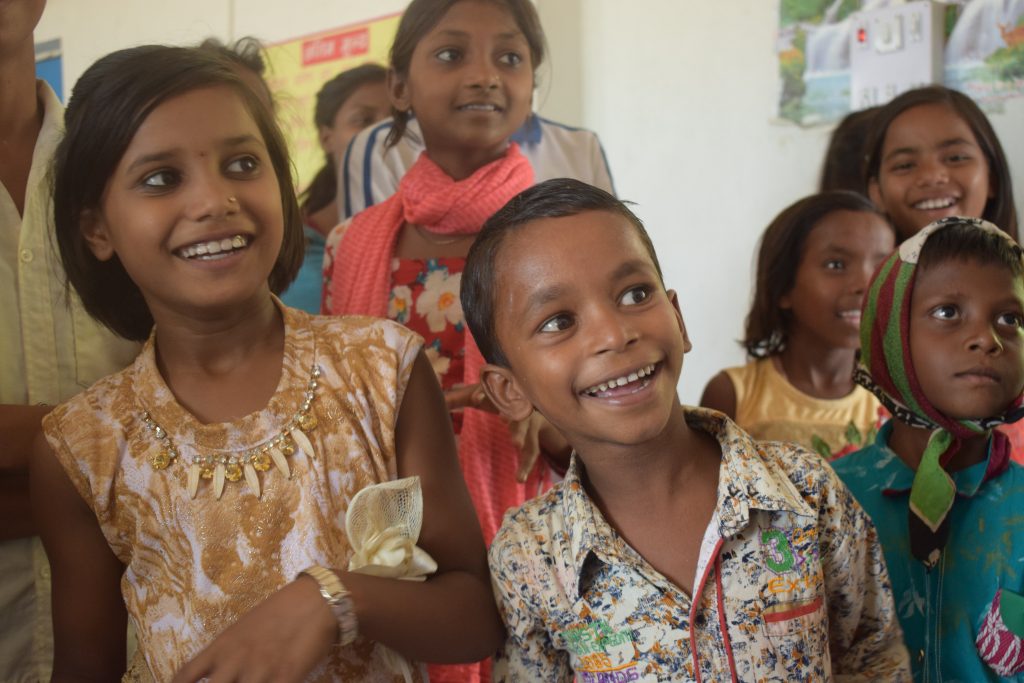
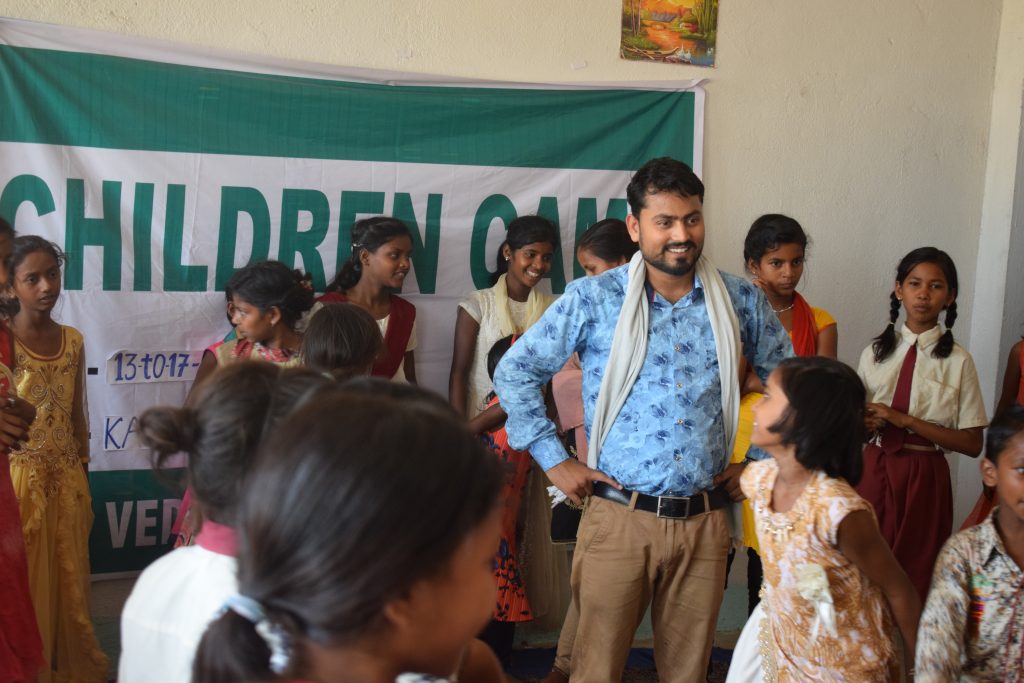
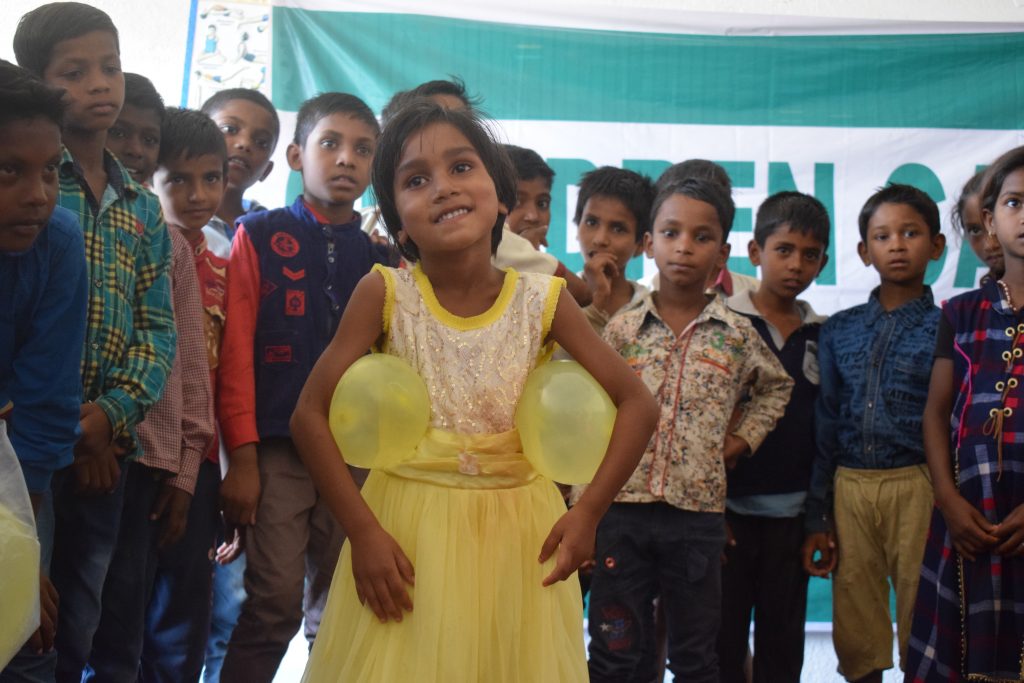
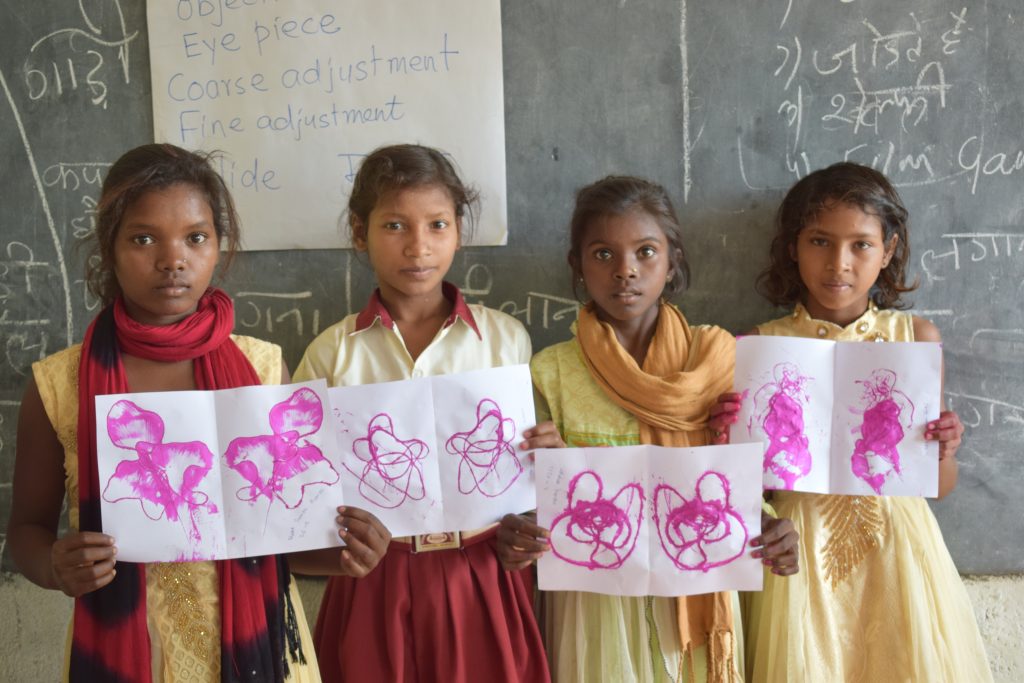
Programme Title: Holistic Initiative for Improving Attendance, Learning & Transition Within Elementary Schools Though participation of children, teachers and communities for Latehar District
Geographical coverage: Latehar and Balumath Blocks in Latehar District
Population focus: The initiative focuses on about more than 40,000 students enrolled in government elementary schools in two blocks of Lather district (Latehar and Balmuth), their families and communities. Balmuth is home to about 89 thousand people, among them about 45 thousand (51%) are male and about 43 thousand (49%) are female. The total literacy rate of Balumath Block is 58.22%. The male literacy rate is 55.59% and the female literacy rate is 38.69% in Balumath Block. Latehar Block of Latehar district has total population of 144,495 as per the Census 2011. Out of which 73,433 are males while 71,062 are females. In 2011 there were total 27,057 families residing in Latehar Block.
| “As per Goal 2 of the UNICEF Strategic Plan 2018-2021, “Every Child Learns” has been identified as a key priority. This implies that ensuring access to as well as quality of education remain central to UNICEF’s efforts towards improved life opportunities for children. UNICEF’s ‘Child Friendly Schools and Systems (CFSS)’ Framework, which is globally accepted, looks at schools and systems holistically from the perspective of their suitability to meet the psycho-social and learning needs of children. It has the potential to ensure quality education to all children. There are three key principals of CFSS framework which include: (a) Child Centered Processes, (b) Democratic Participation and (c)inclusiveness in every aspect. The framework covers elements of physical environment, learning environment, teacher development for improved learning outcome, school community relationships and larger policy frameworks. Within the inter-sectoral and holistic framework, this approach emphasizes on developing schools as conducive spaces for children, where they may get opportunities to thrive and learn. In context of India, RTE Act, 2010 already enshrines the key principles and components of CFSS approach and thus provides structural framework to implement CFSS approach on ground. However, for developing states such as Jharkhand, realization of RTE goals is yet to be a reality for millions of schools going children, even though government and development partners are steadily working towards realization of this goal. Jharkhand fares worse than the national average on key education indicators. Literacy level at 66.41% is lower than the national average (73%). The state is home to 32.99 million people from diverse cultural and linguistic backgrounds. Poverty coupled with political instability often compels parents to choose immediate requirements over long term gains of education. 40,437 out of 47,441 schools in the state are run by government. As per U-DISE data trends, state has made progress on access related indicators. NER at primary level is 97 % and at upper primary level is 89 %. Girls share proportionate enrollments in schools. In context of infrastructure too, there has been improvement. However, this improvement has not resulted in significant changes in actual learning environment. National Study on Working Conditions of teachers[1] sums it up as thus “In the last few years, there has been considerable change in the physical conditions of schools in Jharkhand. …. Construction of buildings, toilets, compound walls, whitewashing of classrooms, coloring of school-buildings and requisite furniture have enhanced the environment of schools. However, this does not mean all is well. Sufficient TLM is available but it is still kept mostly in a safe place. There are toilets in schools but most of them do not have running water facilities.” While there is no large-scale data on children’s attendance yet anecdotal evidences highlight lack of punctuality and poor attendance amongst children often resulting from uninspiring classroom transactions. Even as the current NAS data has indicated some improvement in learning level, yet learning achievements have remained low, especially for children from disadvantaged communities as indicated by various assessment surveys over the years. UNICEF in Jharkhand has been working with the state government on various components of CFSS framework and RTE to make quality education a reality for children. Training of teachers on learner centered pedagogies, preparation of MLE material as well as development of resource persons on MLE, invigorating children’s forums (Bal Sansad) and building capacity of government for implementation of pre-school and school readiness components are some of the examples of UNICEF’s efforts towards quality education. In continuation of the above-mentioned efforts, a multi-dimensional initiative on learning needs has been designed for Latehar. The district was created on 4 April 2001 by separating the erstwhile Latehar subdivision of Palamu district. It is currently a part of the Red Corridor(LWE affected) and a predominantly tribal district with almost 45.54% of the population belonging to the schedule tribes and more than 66 % of total population comprises SCs and STs. The total area of the district is 3,622.50 Sq. Km. It is also one of the aspirational districts. There are two subdivisions (Latehar and Mahuadanr) and nine community development blocks in the district within which distantly located villages are scattered amidst the dense forest, hilly terrains, and agricultural fields. Latehar comes under Tribal Sub Plan Area. The Literacy rate is below state level (Male-69.9%, Female-48.6%).The child sex ratio is 968.Net Enrollment Ratio(NER) at primary level is 89.9 and at upper primary level it is 81(U-DISE 2016-2017),this indicates that a significant proportion of children are not enrolled in age appropriate grade. The annual average dropout rate at primary level is 15.25%(U-DISE 2016-2017) and at upper primary level it is 17.35%.The annual average drop rate steeply increase at secondary classes at 21.13% which is cause of concern. The transition rate from Primary to Upper Primary is 74.51 and from Elementary to Secondary is 70.66. only 2.25 % are RTE compliant. Retention rate is only 66%. In 2006 the Indian government placed Latehar as one of the country’s 250 most backward districts (out of a total of 640). Currently, it is also one of the aspirational districts of Government of India. |

As UDISE show district fares worse than state average on key education indicators.
UNICEF has been working in Latehar district to address various issues related to Child Protection. Efforts are being made to improve awareness amongst communities and service providers in the districts on child marriage and child labor. Education is not only a goal in itself but also plays an instrumental role in eradication of child labor and child marriage. Thus, proposed partnership of Vedic Society and UNICEF aims at ensuring learning, retention and transition of children enrolled in government elementary schools. In view of this context, the initiative will focus on:
The initiative will cover 200 schools in Latehar and Balumath blocks. In Balumath, only 19.4% schools have all three WASH facilities as outlined by RTE i.e. functional toilets for girls and boys, safe drinking water and access to handwashing facilities. In Latehar block, 24% schools have these basics. Percentage of SC and ST children in Balumath is 31.8 and 30.4 respectively in context of total school enrollments. Muslim children form 8.9% of total enrollments. In Latehar, SC children form 19.8% of total enrollments while ST children form 48.4% of total enrollments. 10.8% of all children enrolled in government formal schools are Muslims in Latehar. Thus, a sizable proportion of children attending government schools are from marginalized communities.
Both these blocks have intervention on Child Protection focusing on awareness raising amongst community members, sensitization of service providers and empowerment of adolescents for eradicating child marriage, child labor, and other forms of violence against children. The enabling environment created through this will contribute to the success of education intervention. Education intervention in turn will further strengthen efforts to end child marriage and child labor.